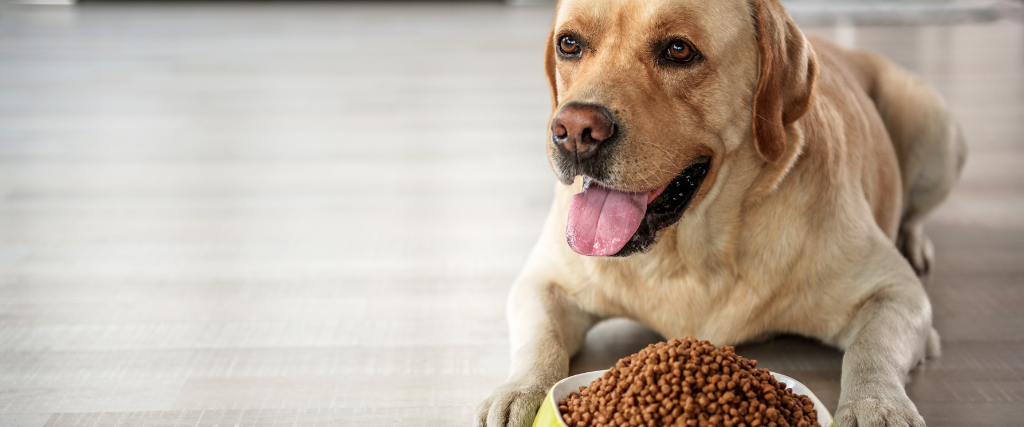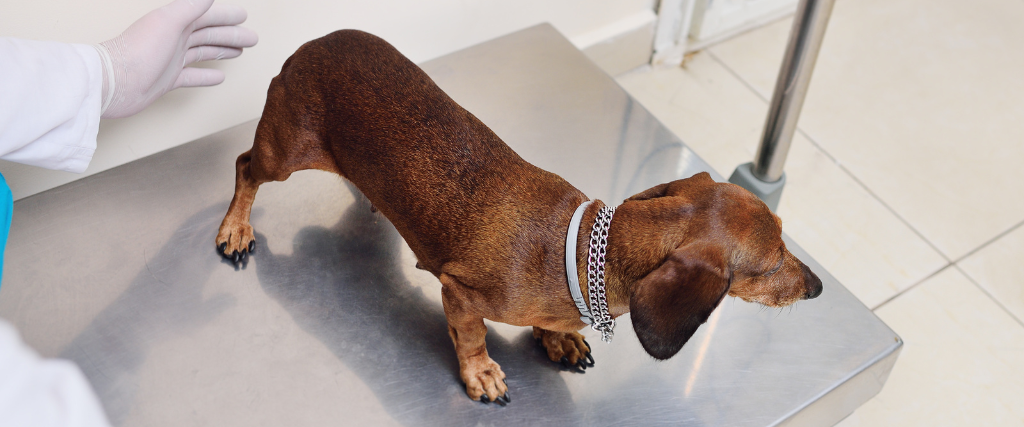We often hear of the obesity epidemic plaguing the U.S., and unfortunately, the issue extends beyond humans. According to the American Kennel Club, 56 percent of dogs are overweight or obese, and fueling this canine health issue is the fact that many dog owners don’t even realize their pet is overweight.
It’s easy to assume that a dog that gets plenty of exercise, moves about easily, and has a happy demeanor is within an acceptable weight range. However, even a few extra pounds can be detrimental to a dog’s health. Translated to human weight, just three extra pounds on a dog that falls into the toy category is equivalent to 30 extra pounds on a human.
Health Risks Associated with Dog Obesity
When your dog carries around extra pounds, it impacts their health and longevity significantly, reducing their life span by as much as two years. This is due to a myriad of health issues that stem directly from obesity and reduced mobility.
Health issues resulting from obesity in dogs include:
- Diabetes
- High blood pressure
- Respiratory disease
- Kidney disease
- Liver disease
- Heart disease
- Cancer
- Urinary tract disease
- Arthritis
- Ligament issues

Assessing Your Dog’s Weight at Home
Obesity is defined as being 30 percent above ideal body weight, although falling into just the overweight category can also lead to health issues in dogs. To avoid health complications and ensure your dog lives pain-free with a high quality of life, dog owners must be aware of warning signs that their dog is gaining too much weight.
Following are two methods for assessing your dog’s weight:
-
The Rib Test
Stand behind your dog and feel both sides of its rib cage. You should be able to feel, but not see, each rib. Your dog should have a visible waist in front of its hind legs that is narrower than its front. If you can pinch more than one inch around your dog’s rib cage, or there is no visible waist, talk to your veterinarian about steps to help your dog shed a few pounds.
-
The Standing Test
Look at your dog from the side and see if its abdomen or stomach sags. Then look from the top to see if your dog’s chest extends out and tapers at the waist to form an hourglass shape. The absence of this shape indicates extra pounds.
For dogs that require grooming, it’s best to perform these tests right after a fresh cut, as excess fur can be mistaken for excess weight.
Food Choice is Critical
Healthy weight for a dog is centered around two critical factors—what they’re eating and how much. While most dog food manufacturers indicate serving size on their packaging, veterinarians caution against following those guidelines since they are too broad and don’t consider important factors specific to each individual dog.
Your dog’s age, body condition, muscle mass, lifestyle, and medical conditions all need to be factored into food choice and volume. In certain instances, a fresh food, nutrient-dense diet consisting of lean proteins and fiber through fresh vegetables might be in order. For other dogs, a dry food option designed for weight management might prove helpful. Consult with your veterinarian about the best choice for your dog.
In addition to food your dog is being served at mealtimes, be careful with treats. Too many treats add extra pounds, so limit them or switch to fresh veggies as a healthier treat option. Replace treat time with additional love time and give lots of pets instead of snacks.

Exercise is Also Critical
For a dog to maintain a healthy weight, the standard suggestion is a minimum of 20 minutes of exercise each day. This can include a neighborhood walk, a game of fetch in the yard, playing frisbee, going for a hike, swimming, or spending time running around a local dog park. However, the amount and type of exercise are contingent on your dog’s age and overall health. The American Kennel Club offers additional insight into dog exercise, from puppies to senior dogs.
If you work outside the home and your dog is alone for several hours each day, consider hiring a dog walker to visit daily to ensure your dog is receiving adequate exercise, then take them on another walk once you’re home from work.
Dog obesity is just as prevalent as human obesity, and perhaps the more frightening weight epidemic since so many dog owners are unaware that their dog is overweight. Visit your veterinarian regularly for a weight check, and contact us to learn more about dog obesity and the resulting consequences.

